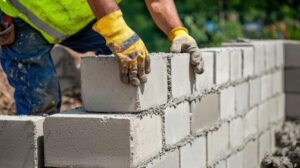Dog Boarding Chico is invaluable service for pet owners, offering professional care and socialization for pets when their humans are away. But it can be stressful for dogs.

Choose a boarding facility with a clean, safe environment. If you’re unsure, schedule a trial visit and leave your pet with them for a few days.
Professional dog boarding facilities are designed with the safety of dogs in mind. They have secure fencing, surveillance systems, and protocols for emergency response in the event of an accident or illness. This level of professional oversight is one of the biggest advantages of dog boarding over alternatives like pet sitters.
A quality boarding facility will also have the expertise to address medical and behavioral issues, whereas a pet sitter may not be equipped to handle them. They can take steps to ensure that your dog is comfortable and healthy, including feeding them the food they require, administering medication, and managing behavior.
Dog boarding facilities also have staff that are trained in understanding dogs’ emotions and behaviors, which can ease their stress when separated from their owners. They can provide daily routines that mimic the structure many pets are accustomed to at home, and they can help them manage anxiety with exercise sessions, playtime, and quiet periods. This can be especially helpful for dogs who are prone to separation anxiety, as it provides them with a familiar and consistent experience.
In addition to offering a safe and reliable environment, professional boarding services often offer regular updates on your dog’s condition and well-being. Some provide text or email updates, while others allow you to log on and see your dog via webcam. This can be a great way to alleviate concerns, as it gives you a sense of what your dog is doing while you’re away and shows that they are in good hands.
If you’re considering boarding your dog, do some research to find the right option for you. Consider the cost and location, and ask about safety measures. Look for a facility that is clean and well-maintained, and visit the site before your departure to assess its safety, security, and staff competence. You should also ask about vaccination requirements, and request a copy of the facility’s emergency preparedness plan. Be sure to make a reservation in advance, as popular facilities fill up quickly during the holidays and summer vacation months. A quality boarding facility should have a veterinarian on call, and they should be familiar with your pet’s vaccination history and health records.
Socialization
There comes a time when all pet owners must leave their furry companions for extended periods of time. While some dogs adjust to boarding and seem to enjoy their temporary home away from home, others pine for their owners, refuse to eat or become overly anxious. It is important to make sure your dog or cat has the best boarding experience possible in order to keep them calm and happy while you are away.
Whether you choose a kennel, a dog hotel or another type of dog facility, ensure that they provide professional care and socialization to make your pup or cat’s stay as comfortable and enjoyable as possible. Traditionally, kennels provided cold concrete and steel runs with limited interaction for their guests. While this is still the norm in some facilities, upscale boarding options offer more luxurious accommodations that are closer to a pet hotel experience. From doggie cots and plexi-glass elevated runs to private suites and one-on-one playtime, these facilities prioritize the comfort of their boarders.
Early and regular socialization is an important part of your dog’s development, increasing confidence and reducing fearfulness. It can also help prevent behavioral problems, such as separation anxiety or aggression. When your pup is well-socialized, they are more likely to react positively to new people and situations, and will be safer around strangers and other pets, making them a better behaved and happier companion.
If your dog or cat is highly anxious about boarding, it may be difficult for staff members to determine if it’s normal separation anxiety or a more serious problem. Dogs that lash out at other dogs or humans, refuse to eat or pace while in their enclosures are often experiencing extreme anxiety. In this case, a doctor can prescribe anti-anxiety medication to ease your pet’s discomfort.
Routine
As a dog owner, there will likely come a time when you can’t take your pup with you. That’s when dog boarding becomes a popular solution. While most dogs enjoy a trip to the kennel, it can be stressful for them and their owners. To help your pet have a safe and enjoyable experience, it’s important to socialize your dog before boarding them. This will familiarize them with new people and animals and help them to relax in a new environment. You can do this by taking your dog to dog parks, setting up playdates, or simply inviting friends and family to your home for a visit.
Once you have found a boarding facility, it’s important to communicate your dog’s medical history to the staff. This will help to ensure that your dog is given the care that they need during their stay, including any allergies or ongoing treatments. You may also want to provide emergency contact numbers, so that you or a trusted person can be reached if necessary.
It’s also a good idea to share any other information that you feel may be relevant to your dog’s boarding experience. This can include eating habits, medications, and any special behaviors or triggers that they might have. Providing the boarding facility with a list of your pet’s supplies is also helpful, so that nothing gets overlooked. Lastly, be sure to bring your dog’s leash, collar, and identification tags.
When the day comes to drop your dog off for their boarding stay, be sure to keep goodbyes short and positive. Dogs pick up on their owners’ emotions, so prolonging a goodbye can make them nervous and anxious. When you return to pick up your pet, be sure to shower them with affection and praise. This will help to reinforce the message that boarding is a safe and happy place, and it will help them to look forward to their next visit.
For some dogs, a trial run, like a daycare or short overnight stay, is a great way to ease them into the boarding experience. This allows them to become familiar with the boarding facility, staff, and routines and can help to reduce anxiety.
Security
A dog boarding facility that prioritizes safety measures provides peace of mind for pet owners. This includes ensuring that dogs remain in a safe environment through secure enclosures, constant supervision, and prompt access to emergency care. In contrast, private boarding often lacks these basic safety standards, putting pets at greater risk of illness and injury while they are away from home. Evaluate a potential boarding facility’s cleanliness, staff credentials, and safety measures to ensure that your pet will receive the highest-quality care while you are away.
When inspecting a dog boarding facility, focus on the kennel areas. Check for clean kennels and bedding, as well as proper disposal techniques to prevent contamination. Observe how the staff interact with dogs to see how friendly and attentive they are. A clean environment and a dedicated approach to hygiene support a nurturing environment that helps dogs feel at ease during their stay.
While evaluating a facility’s safety measures, ask about vaccination requirements, medication administration procedures, and emergency response protocols. Ideally, a luxury boarding facility will collaborate with local veterinarians to provide immediate medical attention for pets in the event of an emergency. Reviewing these policies demonstrates that the facility has the capacity to provide high-quality emergency care, and it provides peace of mind for pet owners.
Before your pet’s boarding stay, visit the facility to familiarize them with their new surroundings and create positive associations with their time away from home. Taking your pet on a brief walk around the kennel area, allowing them to explore, and interacting with the staff will help reduce anxiety and stress while you are away. Preparation also includes ensuring that your pet’s food, exercise, and sleeping schedule stays as close to normal as possible.
A professional boarding facility typically offers a more transparent pricing structure and a comprehensive suite of services that supports your dog’s health, safety, and comfort. In contrast, private boarding is more likely to impose hidden fees and costs. Ultimately, the higher cost of a professional boarding option may be worth it in terms of your pet’s safety and happiness while you are away from home.








